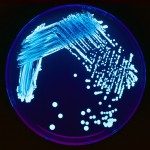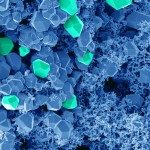Présentation
Development of specific imaging nanoprobes against intracerebral targets is a challenging field of research, particularly for the diagnosis of neurodegenerative diseases. Probes based on camelid single-domain antibody-fragments (VHHs or nanobodies) are promising tools due to their high specificity and their ability to cross the blood brain barrier.
The overall objective of the project is to use VHH-derived probes for the direct detection of the main neuropathological hallmarks of Alzheimer’s disease. Our specific aim is to develop chemically-defined VHH conjugates with a contrast agent to allow the in vivo detection of these brain lesions by magnetic resonance imaging. Methods for the efficient conjugation of available probes to appropriate contrast agents are being developed.






